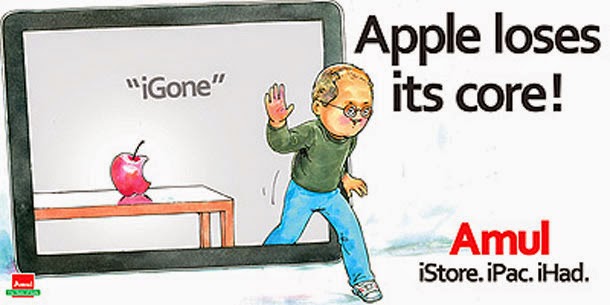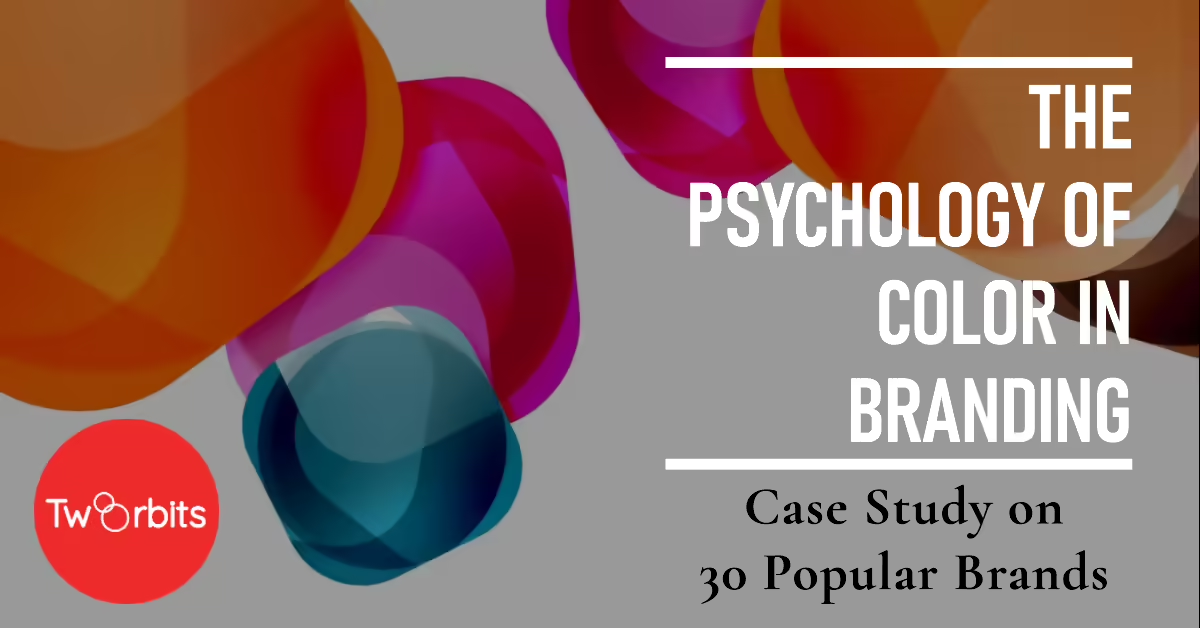
How to Use Viral Marketing When Launching a New Product
When it comes to launching a new product, marketers know that generating buzz and excitement is crucial for success. One effective way to do this is by utilizing viral marketing tactics.
Viral marketing is a marketing strategy that relies on users sharing content with their friends and followers. This can be done through social media, email, or word of mouth amplification. When done correctly, viral marketing can be a very effective way to reach a large audience and generate interest in a new product.
In this blog post, we will discuss how marketers can use viral marketing to launch a new product. We will cover the following topics:
- Various marketing strategies for new product buzz launches
- The concept of viral marketing and its core principles
- Why viral marketing is an efficient way to promote products
- How viral marketing works
- Online buzz marketing
- Viral campaign strategies
- Strategies to make something go viral
Marketing Strategies for New Product Launch
Product launch virality depends on various factors, let’s discuss them in detail. Before diving into viral marketing, it’s important to understand the various viral branding methods commonly used for new product launches. These may include viral advertising methods such as print ads, TV commercials, and billboards, as well as digital marketing techniques like search engine optimization (SEO), pay-per-click (PPC) advertising, and email marketing.
However, with the rise of social media and the internet, viral marketing has become an increasingly popular choice for product launches. This is because viral marketing allows brands to reach a large audience quickly and efficiently, often at a lower cost than traditional marketing methods.
It’s essential to choose the right marketing strategy based on the product and target audience. For example, if the product is visually appealing or has a unique feature, video marketing may be an excellent choice. On the other hand, if the target audience is primarily young adults, social media platforms like Instagram and TikTok may be more effective.
There are many different marketing strategies that can be used to launch a new product. Some of the most common strategies include:
- Advertising: This involves paying for space in traditional media, such as print, television, or radio.
- Public relations: This involves generating positive publicity for the product through media coverage, events, or sponsorships.
- Digital marketing: This involves using online channels, such as social media, search engine optimization (SEO), and email marketing, to reach potential customers.
- Viral marketing: This involves creating content that is so engaging that people share it with their friends and followers.
The best marketing strategy for a new product launch will depend on a number of factors, including the product itself, the target audience, and the budget.
Understanding Viral Marketing Success
Viral marketing, also known as word of mouth marketing, relies on consumers to spread the word about a product or service. It’s all about creating content that people want to share with others, resulting in exponential growth in brand awareness and reach.
The viral marketing success factors lies in its ability to create massive reach and engagement. When a piece of content goes viral, it can potentially reach millions of people within a short period, generating significant brand exposure. Additionally, since viral marketing relies on user-generated content, it encourages customer participation and fosters a sense of community around the brand.
There are a number of factors that can contribute to the success of a viral marketing campaign. These include:
- Content: The content should be interesting, engaging, and shareable.
- Timing: The campaign should be launched at the right time when the target audience is most likely to be interested in the product.
- Promotion: The campaign should be promoted effectively through social media, email, and other channels.
Efficiency of Viral Marketing in Product Promotion
Viral marketing can be an efficient way to promote products because it can reach a large audience quickly and cheaply. In addition, viral campaigns can generate high ROI and brand visibility.
For example, the “Ice Bucket Challenge” campaign raised over $100 million for ALS research. The campaign was so successful because it was simple, engaging, and shareable.
Viral marketing is considered an efficient way to promote products for several reasons. Firstly, it’s cost-effective compared to traditional advertising methods. Instead of spending thousands of dollars on a single commercial, brands can invest in creating shareable content that can be distributed organically through social media channels.
Secondly, viral marketing campaigns can generate high ROI (return on investment). By creating content that resonates with the target audience, brands can encourage users to share their experiences, leading to increased brand visibility and ultimately, sales.
Lastly, viral marketing allows brands to tap into current trends and capitalize on timely opportunities. By monitoring social media conversations and staying up-to-date with industry news, brands can create relevant and engaging content that aligns with their target audience’s interests.
The Mechanics of Viral Marketing
So, how does viral marketing actually work? At its core, viral marketing relies on social sharing, user-generated content, and trends. Let’s take a closer look at each element:
- Social Sharing: Social media platforms have revolutionized the way we communicate and interact with one another. Brands can leverage these networks to encourage sharing and collaboration among users. By creating content that’s easy to share, such as funny videos, memes, or infographics, brands can increase their chances of going viral. Utilise all types of social media sharing tactics for this.
- User-Generated Content: People trust recommendations from friends and family more than they trust branded messages. User-generated content (UGC) taps into this principle by encouraging customers to create and share content related to the brand. UGC not only increases engagement but also provides valuable feedback for future marketing efforts.
- Trends: Keeping up with current trends is critical in viral marketing. By identifying popular topics and incorporating them into their content, brands can piggyback off existing momentum and increase their chances of going viral.
Viral marketing works by creating content that is so engaging that people share it with their friends and followers. This can be done through social media, email, or word-of-mouth.
There are a number of factors that can influence whether or not content goes viral. These include:
- The content: The content should be interesting, relevant, and shareable.
- The target audience: The content should be targeted to the right audience.
- The timing: The content should be released at the right time.
- The promotion: The content should be promoted effectively.
Now, let’s look at some successful viral marketing campaigns and their impact on product launches:
- Dove’s Real Beauty Sketches: This campaign featured a forensic artist drawing women according to their self-descriptions versus how others described them. The video sparked a global conversation about beauty standards and body positivity, resulting in over 67 million views on YouTube and widespread media coverage. The campaign helped Dove achieve a 5% increase in sales and strengthened its position as a leader in the personal care industry.
- Coca-Cola’s Share a Coke: In 2011, Coca-Cola launched a campaign that replaced its iconic logo with the most popular names among teenagers and young adults. The “Share a Coke” campaign encouraged consumers to share a Coke with friends and family members whose names appeared on the bottles. The campaign resulted in a 7% increase in Coca-Cola sales and became a cultural phenomenon, with users sharing photos of themselves with their personalized Coke bottles on social media.
- Airbnb’s One Less Stranger: In 2019, Airbnb launched a campaign that highlighted the positive impact of hosting strangers on the platform. The campaign featured stories of hosts who had formed meaningful connections with guests from different cultures and backgrounds. The campaign resulted in a surge of bookings and solidified Airbnb’s position as a leader in the home-sharing industry.
These examples demonstrate how successful viral marketing campaigns can be in building brand awareness, driving engagement, and ultimately, boosting sales. However, it’s worth noting that achieving virality is not a guaranteed outcome, and there are risks associated with attempting to create viral content.
Psychology of Viral Social Media Posts
The psychology behind viral social media posts is a fascinating blend of human emotions, cognitive biases, and social dynamics. Viral content promotion tends to tap into these psychological factors, making it relatable, shareable, and attention-grabbing. Let’s categorize these factors and provide examples along with some tips for creating viral content:
1. Emotion and Identity: Viral content often triggers strong emotions, such as joy, surprise, anger, or nostalgia. It resonates with people’s personal experiences and emotions, encouraging them to share to express their identity.
Example: The “Ice Bucket Challenge” raised awareness about ALS by involving people in a fun and engaging activity while making a difference.
View this post on Instagram
Tip: Create content that evokes emotional responses. Consider how your content can align with people’s identities and values.
2. Storytelling: Humans are wired to remember stories. Viral content often presents a compelling narrative that captures attention and leaves a lasting impact.
Example: The “Dumb Ways to Die” campaign by Metro Trains used cute characters and catchy music to deliver a serious safety message in an engaging way.
Tip: Craft a narrative that connects with your audience and conveys your message creatively.
3. Uniqueness and Novelty: Novelty captures attention. Viral content often presents something new, unusual, or unexpected that piques curiosity.
Example: Burger King’s “Google Home” Ad. It intentionally triggered Google Home devices to read the Wikipedia entry for their Whopper, sparking discussions about invasive advertising.
Tip: Offer a fresh perspective or a unique angle to stand out from the crowd.
4. Social Proof and FOMO (Fear of Missing Out): People are more likely to engage with content if they see others doing the same. Viral content leverages social proof and FOMO to encourage participation.
Example: Facebook’s early days used exclusivity to drive engagement, requiring a .edu email address for registration.
Tip: Highlight user engagement and make people feel like they’re part of an exclusive community.
5. Relatability and Empathy: Content that resonates with people’s experiences, challenges, and aspirations is more likely to go viral. It creates a sense of connection and empathy.
Example: Tata Tea’s “Jaago Re” campaign in India addresses social and political issues, resonating with people’s desire for change and inspiring them to take action.
Tip: Address common struggles or aspirations your audience can relate to.
6. Humor and Entertainment: Laughter is universal. Humorous content entertains and spreads quickly, as people enjoy sharing things that make them smile.
Example: Amul’s witty topical advertisements in India provide humorous commentary on current events and pop culture, making their brand a source of entertainment and engagement.

Tip: Use humor to entertain and brighten your audience’s day.
7. Visual and Aesthetic Appeal: Images and videos are more shareable than text. Visual content with a pleasing aesthetic is likely to catch the eye and encourage sharing.
Example: The Dolce & Gabbana #DGRealPeople campaign challenged traditional beauty norms by featuring a diverse cast of individuals, celebrating authenticity and uniqueness in the world of high fashion.
View this post on Instagram
Tip: Prioritize visually appealing elements in your content strategy.
8. Call to Action and Participation: Viral content often encourages participation, whether through challenges, quizzes, or interactive elements, making people feel actively involved.
Example: The “Share A Coke” campaign by Coca-Cola in India encouraged customers to find bottles with their names and share photos with the hashtag #ShareACoke, turning product consumption into a participatory experience.
View this post on Instagram
Tip: Include a clear and engaging call to action that prompts users to participate.
Tip: Use TwoOrbit’s AI Instagram Hashtags Generator for free to boost your Instagram marketing.
9. Timeliness and Relevance: Content that taps into current trends, events, or cultural moments tends to gain traction as it’s relevant and topical.
Example: In 2020, Airbnb launched the Go Near campaign in response to the COVID-19 pandemic. The campaign encouraged people to explore local destinations and support nearby communities. It was timely and relevant, considering the travel restrictions and the need for safe and local travel options.
Tip: Stay updated on current events and trends to create content that’s timely and relevant.
10. Shareability and Simplicity: Content that’s easy to understand and share has a higher chance of going viral. Complicated or lengthy content might lose people’s interest.
Example: Guinness’ FIFA World Cup ad celebrates the passion and diversity of African football fans. The ad aims to showcase the power of football fandom and build on the brand’s Bring it to Life strategy, which has been used to promote the brand’s partnership with rugby in the past. The purpose of the ad is to promote the Guinness brand and its association with the FIFA World Cup.
Tip: Keep your content concise, simple, and easy to share across different platforms.
Remember, creating viral content is not a guaranteed formula, as it also involves an element of luck and timing. However, by understanding these psychological factors and incorporating them into your content strategy, you can increase your chances of creating content that resonates with a wide audience and goes viral.
Strategies to Make Something Go Viral
There are a number of strategies that can be used to make something go viral. These include:
- Leverage emotional triggers: People are more likely to share content that evokes strong emotions, such as joy, surprise, or anger.
- Use storytelling: People are more likely to share content that tells a story.
- Make it shareable: The content should be easy to share on social media and other channels.
- Promote it effectively: The content should be promoted through social media, email, and other channels.
How to Create Viral Content for Social Media for Free?
Creating viral content for social media involves a combination of creativity, strategy, and the right tools. Here’s a list of free tools along with a step-by-step guide on how to use them to create viral content for Instagram/Tiktok/Facebook/X (Twitter) etc.:
1. Canva: Canva is a versatile design tool that allows you to create stunning graphics, presentations, and videos.
Steps:
- Sign up or log in to Canva.
- Choose the type of content you want to create (e.g., social media posts, infographics, videos).
- Select a template or start from scratch.
- Customize your design by adding text, images, icons, and other elements.
- Use Canva’s features to enhance visuals, adjust colors, and add effects.
- Download or share your content directly on your social media platforms.
2. Adobe Express: Adobe Express offers easy-to-use tools for creating graphics, videos, and web pages.
Steps:
- Create an Adobe Express account.
- Choose a format (e.g., video, post, page) for your content.
- Pick a template or start from scratch.
- Add text, images, icons, and themes to your design.
- Incorporate animations, transitions, and effects for videos.
- Preview your creation and publish it directly to social media.
3. Animoto: Animoto helps you create professional-quality videos using your photos, video clips, and music.
Steps:
- Log in to Animoto or create an account.
- Choose a video style or template that matches your content’s vibe.
- Upload your photos and video clips.
- Add text, captions, and music to enhance your video.
- Customize the look and feel with filters and effects.
- Preview and export your video, then share it across your social media platforms.
4. Buzzsumo: Buzzsumo lets you discover trending topics, popular content, and influencers in your niche.
Steps:
- Sign up for a Buzzsumo account.
- Enter keywords related to your industry or content idea.
- Explore trending topics and popular content.
- Analyze competitor content to understand what’s working.
- Identify influencers who can amplify your content’s reach.
- Use insights to shape your content strategy and increase its potential to go viral.
5. Hootsuite: Hootsuite is a social media management tool that helps you schedule, publish, and monitor your content across multiple platforms.
Steps:
- Create a Hootsuite account and connect your social media profiles.
- Plan your content calendar, scheduling posts at optimal times.
- Craft engaging captions that align with your viral content strategy.
- Use Hootsuite’s scheduling feature to queue up your posts.
- Monitor engagement and respond to comments in real-time.
- Analyze post performance to refine your strategy for future content.
6. CoSchedule Headline Analyzer: CoSchedule’s tool helps you craft attention-grabbing headlines that increase click-through rates.
Steps:
- Visit the CoSchedule Headline Analyzer website.
- Enter your headline idea.
- The tool will provide insights into its emotional appeal, word balance, and length.
- Aim for higher emotional scores and a balanced word count.
- Refine your headline until you achieve a strong score.
- Use the optimized headline in your viral content to boost engagement.
Remember that the tools you choose should align with your content creation style and goals. While these steps can help you create viral content, there’s no guaranteed formula. Experiment, iterate, and be open to trying new approaches based on the response you receive from your audience.
Risks of Viral Marketing
While viral marketing can be highly effective, it’s important to recognize the potential risks involved. Here are some of the risks that marketers should consider:
- Overemphasis on entertainment value: In pursuit of creating viral content, marketers may sacrifice substance and focus solely on entertainment value. This can lead to shallow messaging that fails to convey the brand’s values and mission.
- Lack of authenticity: Consumers are quick to spot insincere or forced attempts at virality. If a brand’s attempt at viral marketing doesn’t feel genuine or authentic, it can backfire and harm the brand’s reputation.
- Negative associations: Viral content can sometimes attract negative comments or associations, especially if it’s controversial or provocative. Brands must be prepared to handle potential backlash and address any negative sentiment that arises.
- Unpredictability: There’s no formula for guaranteeing virality, and even the best-laid plans can fall flat. Brands that invest heavily in viral marketing without a backup plan risk wasting resources and damaging their reputation.
- Ethical concerns: With the emphasis on attention-grabbing content, there’s a risk of exploiting sensitive topics or using manipulative tactics to get shares. Brands must ensure that their viral marketing efforts align with ethical principles and respect consumer privacy and sensitivities.
Conclusion
Viral marketing can be a powerful tool for building brand awareness and driving engagement. However, it’s crucial to approach viral marketing with caution and carefully weigh the potential benefits against the risks. To maximize the effectiveness of viral marketing efforts, brands should focus on creating authentic, creative, and relevant content that resonates with their target audience. By doing so, brands can harness the power of viral marketing to achieve their business goals while maintaining their integrity and reputation.
Frequently Asked Questions about Online Viral Marketing
What are the key principles of viral marketing?
How can I measure the success of a viral marketing campaign?
What are some common mistakes to avoid in viral marketing?
How can I create a viral marketing campaign on a budget?
What are some examples of successful viral marketing campaigns for small businesses?
How can I make my viral marketing campaign ethical and socially responsible?

I’m the cofounder of TwoOrbits.com and love to write about digital marketing, SEO, technology, DIY hacks and more. Share your feedbacks and suggestions via comment. Connect with me via LinkedIn and lets start an insightful conversation.



Leave a Reply